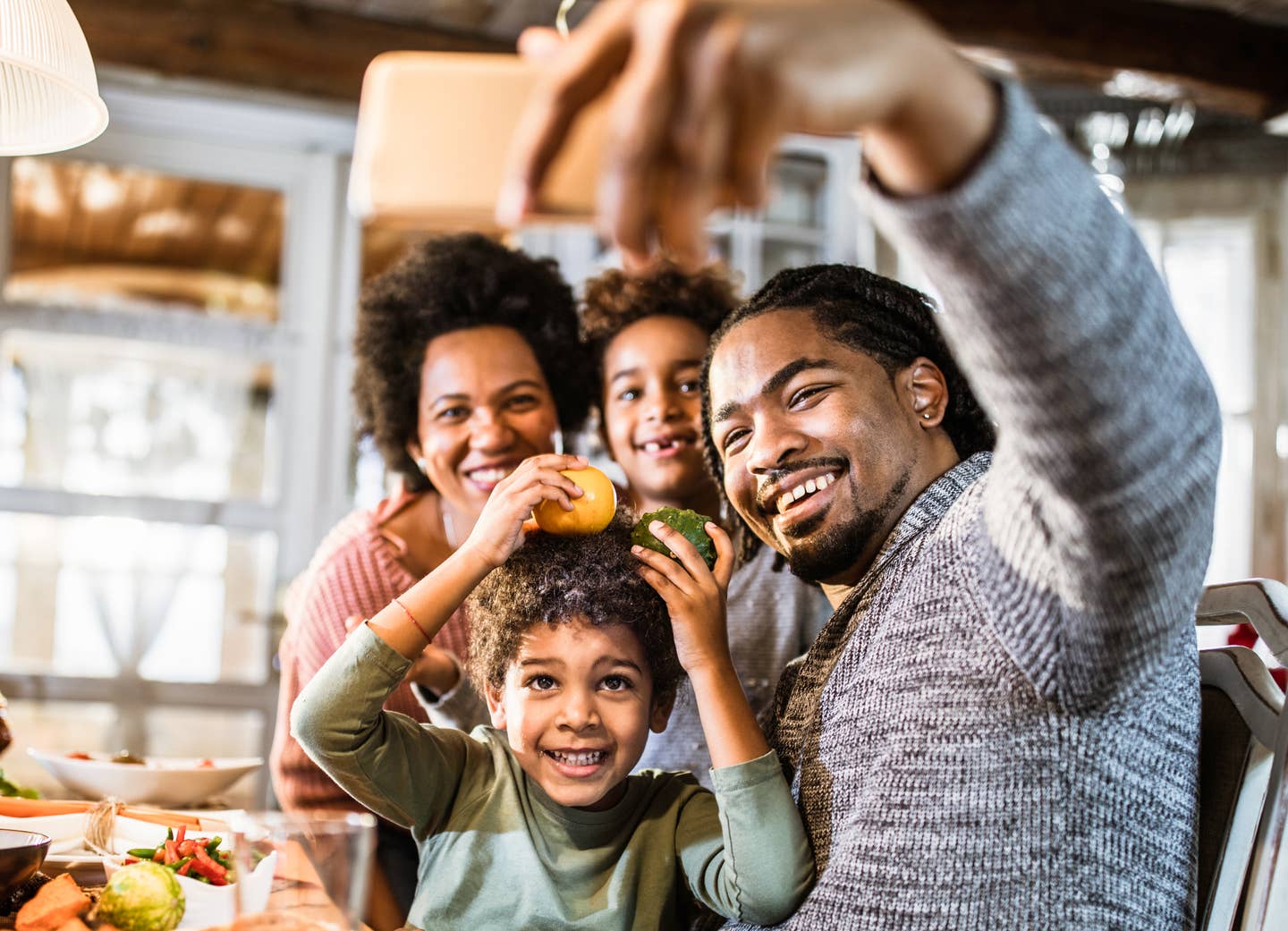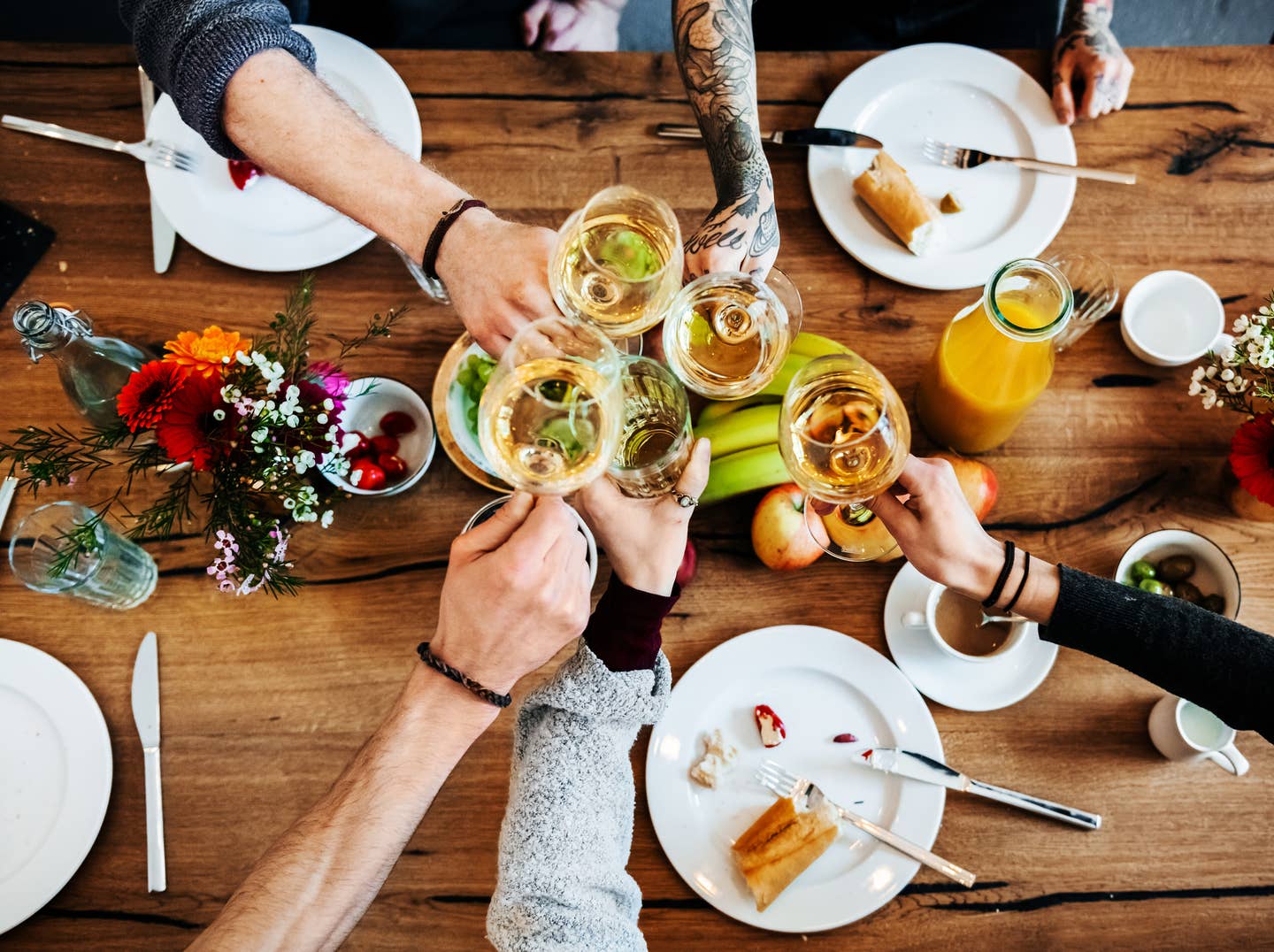
This Is What African-American Plant-Based Food Traditions Can Teach Us
While interest in plant-based eating has had a steep growth curve over the past several years, it is certainly not a new phenomenon. Veganism in the United States is often viewed as a lifestyle primarily accessible to affluent white people, but plant-based eating goes so much deeper than green juice and beautifully crafted avocado toasts.
Though veganism is not generally associated with Black Americans, we traditionally ate primarily plant-based diets. This type of eating was born out of necessity. Up until fairly recently, meat was an expensive luxury that was used in small quantities or for special occasions. The African American story in the United States begins with slavery in the Deep South, where Black people subsisted on farming and rations that included produce, grains, and a small portion of undesirable cuts of meat. Working with traditional methods of frying, drying, pickling, and seasoning, Black Americans worked with what little they had to create a unique African American food culture. After emancipation, these food traditions continued to blossom and evolve and eventually morphing into the soul food cuisine that populated the country during the Great Migration.
Many of the crops available in the South today are either approximations of or direct descendants of West African plants. Europeans brought crops to the New World, and African women even braided rice and seeds into their hair to preserve a little bit of home. Sweet potatoes, greens, and groundnuts are three key non-native ingredients that have staple foods for centuries. While this piece centers on the history of Black folks in the American South, there are also incredible plant-based food traditions in the diaspora, including Latin America, the Caribbean, and Africa itself.
Sustainability
Though Africans and African Americans lived all over the United States for centuries, the core of our cultural traditions originates in the Deep South: Alabama, Mississippi, and Georgia. Some of the staple foods include rice, beans, okra, cabbage, sweet potatoes, and that ever-present stronghold: greens. The wild greens of the South were bitter, abundant, and generally undesirable; this made them a great candidate to round out sparse diets. Black Americans slow-cooked bitter greens like collards, turnips, or mustards until they were soft and palatable. While many recipes include a bit of ham or other animal fat for flavor, these are easy to omit.
As many of us are eager to tackle the urgent problem of food waste, modern cooks can learn from the sustainability inherent in Black heritage cooking: instead of discarding the greens from your root vegetables, consider tossing them in a vinegary dressing or simmering them with vegetable broth, onion, garlic, and spices. My favorite simple way to cook greens is to sauté them in olive oil and finish with a bit of balsamic vinegar or hot sauce. Acidity cuts through the bitterness of the greens and the sweetness of balsamic vinegar helps to balance the flavor. Peppery turnip and mustard greens and the more bitter collards and curly kale are the most typical varieties used in Black Southern cooking, but feel free to experiment with whatever varieties of wild greens are plentiful in your local market. The core of this practice is in using all the plants available to you.
Another amazing way to cut down on food waste is through pickling. For centuries, Black people have preserved both meats and vegetables using this time-honored method. It not only extends the life of produce, it also adds a kick of flavor to food that may otherwise be bland. You would be remiss to see a fish fry without a side of pickles. Although cucumbers are the vegetable (actually a fruit!) most often pickled in American cooking, other candidates include carrots, onions, and peppers.
Quick Spicy Pickle Recipe
This recipe is great to create an easy, flavorful condiment. Keeps refrigerated for 1-2 weeks. The most fun thing about pickles is that once you have your base of vinegar, water, and salt, you can season them however you like.
Ingredients:
- Your choice of cucumber, carrot, red onion, mild peppers
- Red chili flakes or whole red peppers to taste
- 1tsp salt
- 1 tsp sugar
- 1 cup vinegar (distilled white vinegar and apple cider vinegar are both great choices).
- 1 cup water
Directions:
- Chop or slice your vegetables into your desired size and shape. Tightly pack in mason jar, leaving room for brining liquid.
- You can pre-mix the water, vinegar, sugar, salt, and red chili in a small bowl, this allows you to adjust the ingredients to taste. I prefer to pour all ingredients directly into the jar and give it several good shakes. Ensure that the pickles are completely covered.
- Secure lid on your jar and refrigerate until ready to use.
Ritual
When is the last time you truly savored a meal? In our fast-paced lives, we often lose sight of the small things that bring us joy. Food is not merely for sustenance, but also holds the potential for connection, contemplation, and contentment. Rituals surrounding food give us the opportunity to slow down and can even be meditative. One such ritual is the Southern tradition of cooking black-eyed peas on New Years Day, dating back to the Civil War. Though a humble food once eaten primarily by slaves, their ability to sustain people through harsh winters has made black-eyed peas a symbol of good fortune and prosperity. Cooking a pot of these hearty beans is a comforting winter meal and an opportunity to gather with friends and family and share intentions for the year ahead. There are many variations depending on the region and unique family traditions, but black-eyed peas are typically served with cornbread and greens.
Black-Eyed Peas Recipe
From: The Spruce Eats
Total time: 2 hrs 10 mins
Prep: 10 mins
Cook: 2 hrs
Yield: 8-12 servings
Ingredients:
- 2 tablespoon olive oil
- 3 cups finely chopped onions
- 4 cloves of garlic (finely chopped)
- 1 15-ounce can low-sodium vegetable stock
- 4 cups dry black-eyed peas
- 5 cups water, plus more, if needed
- 2 15-ounce cans whole tomatoes
- 3 tablespoons tomato paste
- 2 tablespoons dark brown sugar
- Salt and pepper, to taste
Directions:
- In a large pot, heat the oil over high heat.
- Add the onions and garlic and cook, stirring constantly until onions are translucent and fragrant.
- Add the vegetable stock, black-eyed peas, water, tomatoes, tomato paste, and brown sugar, and bring to a boil.
- Turn down the heat to low and simmer for 2 hours, adding more water as necessary, or until the peas are tender.
- Add salt and pepper to taste and serve
Vegan Cornbread Recipe
From: My Quiet Kitchen
Prep Time: 10 mins
Cook Time: 20 mins
Total Time: 30 mins
Ingredients:
- 3 cups stone-ground yellow cornmeal (sometimes called medium-grind)
- 1/4 cup gluten-free all-purpose flour blend or regular all-purpose flour
- 2 tsp baking powder
- 1 tsp baking soda
- 2 1/2 tsp salt
- 2 Tbsp maple syrup or agave nectar. For sweeter cornbread, also add 2 Tbsp granulated sugar.
- 2 1/3 cups unsweetened, unflavored soymilk
- 2 Tbsp apple cider vinegar
- 1/2 cup plus 1 Tbsp Earth Balance vegan butter, divided
Directions:
- Place a 12-inch cast-iron pan in the oven and preheat to 425 degrees. In a large bowl whisk together the cornmeal, flour, baking powder, baking soda, and salt.
- In a mug or small bowl microwave the butter in 20-second intervals until just melted. Pour the batter onto the cornmeal mixture followed by the maple syrup, milk, and vinegar. Whisk or stir just until there are no more dry spots. The batter will look a bit lumpy.
- Carefully remove the hot skillet from the oven and add the extra tablespoon of butter. Again, carefully (remember to put on your oven mitt before grabbing the handle) tilt the pan to swirl the butter around so that it coats the bottom. Now pour in the batter. Bake for 18 to 25 minutes. At the 17-18 minute mark if the center looks set, use a toothpick or knife to test for crumbs/doneness.
- Allow the cornbread to cool in the pan for about 20 minutes before cutting. Store in an airtight container in the refrigerator for up to three days.
Black Veganism Today
“When people hear 'vegan soul food,' they’re like, 'What? That doesn’t even make sense.' And I’m like, it’s not an oxymoron. It’s actually a homecoming” – Adrian E. Miller, the author of Soul Food: The Surprising Story of an American Cuisine, One Plate at a Time, interview with Epicurious.
The small but growing community of black vegans has an important place in the culinary world and in food justice spaces. Most major cities have vegan soul food restaurants and other cuisines from the diaspora (like Ethiopian and Senegalese food in New York City) have plentiful options for plant-based eaters. Many Black vegans connect with plant-based eating both for the ways it has helped them heal physically and as a way to get in touch with their heritage.
In addition to health, tradition, and sustainability, the rise of Black veganism is also connected to addressing gaps in access to fresh produce for underserved communities. Food deserts make it difficult for many people in urban areas to find the foods necessary for a balanced plant-based diet, and those most heavily impacted are working-class people of color. There are many organizations in New York City alone working to combat inequities in access to fresh food, including solutions like salvaging food waste and urban farming. An intersectional understanding of food transforms eating into an act of community care.
For inspiration, education, and recipes, here are a few Black vegan bloggers and restaurants to follow on Instagram:
Additionally, author and nutritionist Tracey McQuirter has compiled this amazing free resource, the African-American Vegan Starter Guide.
Expanding the idea of what plant-based food looks like can help connect vegans to both a larger variety of cuisines and to their community. Learning about the food traditions of your home can add a richness to your eating experiences and strengthen your relationship with the people around you and the earth that holds you up. There is a potential to find a greater purpose in plant-based eating beyond its health and environmental benefits – it can also make us more human.
More From The Beet






